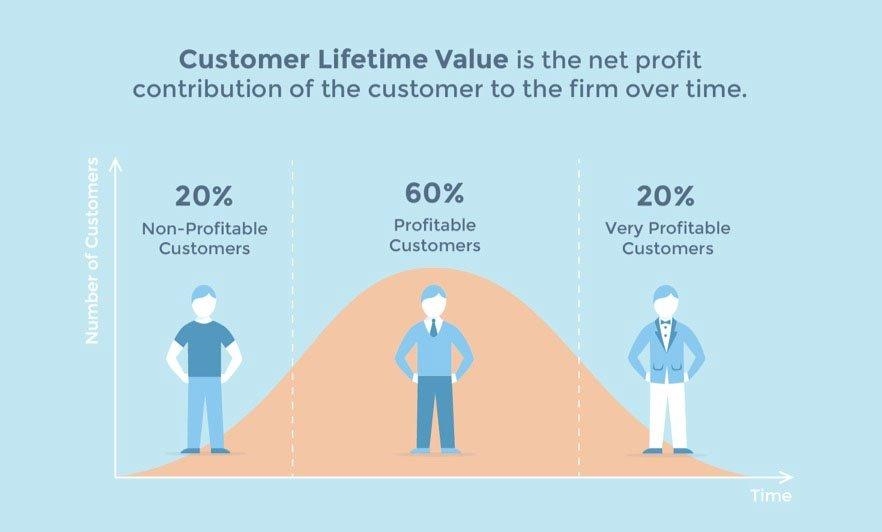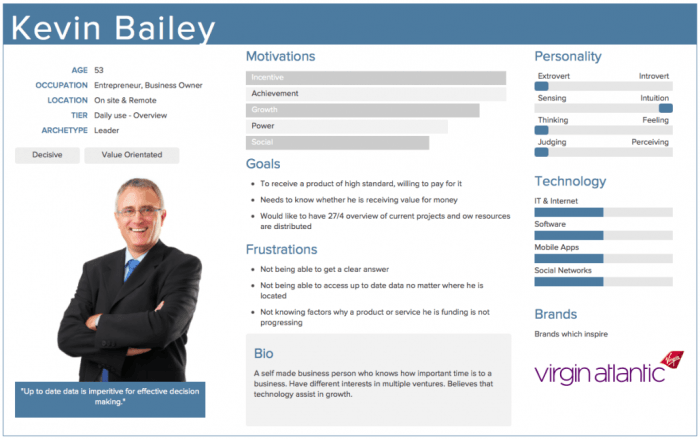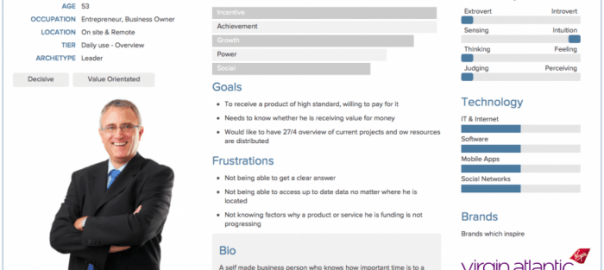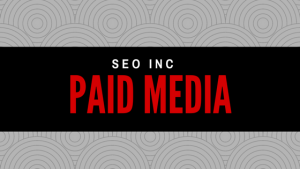Customer acquisition is one of the hardest parts of running a freelancing business or an agency. In this article, I’ll walk you through an actionable strategy to generate more business opportunities with potential clients and close more leads.
Before we get into that, though, it’s worth considering for a moment the health of your business.
Customer Lifetime Value
There are a couple of critical metrics you should measure in your business. One of the most important of these is your customer lifetime value or CLV.

Image Source: Popupsmart
Your customer value is a straightforward metric that provides you with a cash value per customer. This is an important metric to measure because it will help you determine how many customers you need to acquire per quarter to hit your revenue goals.
The customer lifetime value will also help you figure out when your existing customers are likely to leave you. Of course, it’s not a perfect metric, but it’s good to set your business development strategy on some solid foundations.
With your customer lifetime value in mind, it’s time to discuss your sales targets and cold outreach.
How to Find Relevant Leads for Your Business
One of the most effective ways for a business of any size to acquire new leads is through a cold outreach campaign. The starting point for any campaign is to draw up a list of potential companies that share the characteristics as your ideal customer persona.

Image Source: MyCustomer
If you’ve never drawn up a list of sites to target, you needn’t worry. There are a couple of logical places where you can collect relevant leads:
- Local businesses: check out Google My Business. You can quickly collect a list of accountancy firms in your area or whatever other types of company you happen to be targeting
- Medium-Sized Businesses: search regional business magazines and local award ceremonies for companies to target
- Scale-ups: National or regional listings, like the Inc 5,000, are a great resource for rapidly growing companies
- E-Commerce Stores: Use a tool like Ahrefs to identify websites that can afford your services based on search volume
- Enterprise & Multinationals: National stock exchanges are the place to find the largest companies in the world
Once you have created a list of relevant businesses, you can start your outreach campaign.
Response rates from a cold outreach campaign are generally quite low. I like to use email outreach for my campaigns. Based on my experience, response rates from cold outreach are less than 3%. A stat I found online said 1%, which tallies up nicely with my experience. This is why you need to compile a large list of companies for your campaign.
How to Craft the Perfect Outreach Template
There are thousands of articles on the web that discuss how to create an engaging email template for a cold outreach campaign. The secret, if you could say there is such a thing, to create an engaging email is three-fold:
- Start with an engaging subject line. You need to provide the recipient with a reason to open your email
- In no more than a few sentences, define the value you can add to their business. This is where having a clearly defined Uniques Selling Point (USP) comes in handy
- End your email with a clear Call To Action (CTA), that outlines the next steps the recipient should take
That’s a lot of theory. Below is an example cold outreach template an SEO agency might use:
Hi [NAME],
I help companies like yours generate more revenue by optimizing their online properties. I spent the last week reviewing your website and identified several quick wins you could implement to boost profits. Are you interested in a short 15-minute call to run you through my findings?
Speak Soon,
[NAME]
You can see how the email template gets across the vital information you want to convey in just a few short sentences. This is important because you are emailing a stranger you’ve probably never met.
This email template would be the first of a series. I’d suggest sending around three emails in total to people who don’t respond to your initial message.
Each email in your series should have a slightly different focus. For example, the first email could be the template I provided. The second email in the sequence might have a link to a short 3-5 minute Youtube video where you make your pitch. Then, the last email in the sequence might have a link to a client case study or something like that.
The important thing is that you vary your message. Don’t send three different messages with the same request in a row and expect to get a different response.
How to Turn a Prospect into a Warm Lead
If your targeting was on point, you should receive some positive responses from your cold outreach. Your job is to turn these cold leads into clients. The key to a successful meeting is preparation.
Before the meeting, ask the person you just pitched to complete a short survey. Your questionnaire should have no more than ten questions. It should help you ascertain:
- What are the business goals of the company
- How do they measure these goals/ what KPIs do they use to determine success
- Have they worked with an agency or freelancer like you before
You get the idea.
The answer to these questions will help you align your service with their needs. This is important, because the more these two things coincide, the higher the chance they’ll say yes to your service offering.
How to Prepare For the Meeting
Hopefully, you’ll get some valuable feedback from the person you’ll be meeting with about their goals and objectives. Now you should spend a bit of time doing independent research about the person you are meeting.
As I’m sure you well know, you’ll spend about 70% of a meeting discussing business and the remaining 30% just chatting. Researching into the background of the person you are meeting helps you identify commonalities and gives you stuff to talk about. The kind of things you should try and find out about the person you are meeting include:
- Where they went to university and what they studied
- How long have they been in their current job
- What kind of interests and hobbies do they have
Thirty minutes or so browsing social media feeds, reviewing their LinkedIn profile, and seeing if they have written blog posts, or have a blog, should give you a sense of the person. This background knowledge will help you get the meeting off on the right foot.
Wrapping Things Up
At the start of this guide, I promised to share with you an actionable business strategy to generate more business opportunities with potential clients and close more sales. I started by showing you how to evaluate the health of your business so you can set clear sales targets.
Following this, I showed you how to undertake cold outreach by defining your customer persona and building up a list of potential clients. We covered how to conduct your outreach by email, and when you received a positive response, how to prepare for a meeting. Now it’s up to you to run with this strategy — best of luck.
Digital & Social Articles on Business 2 Community
(50)








